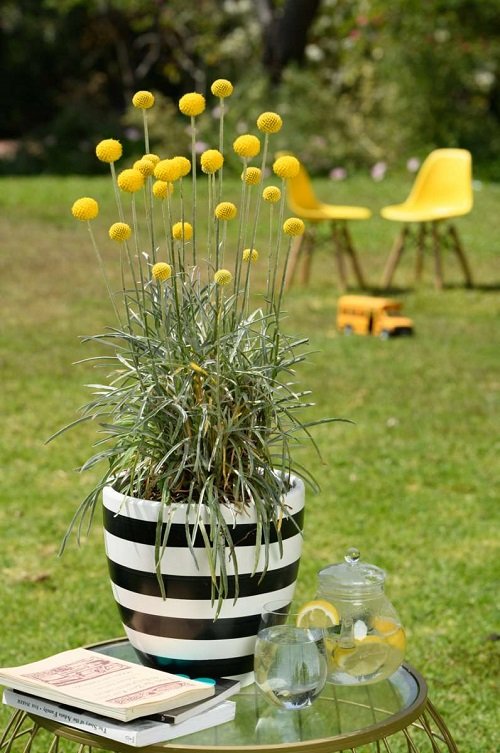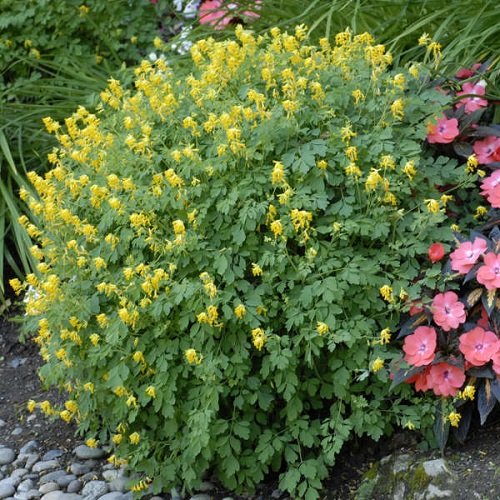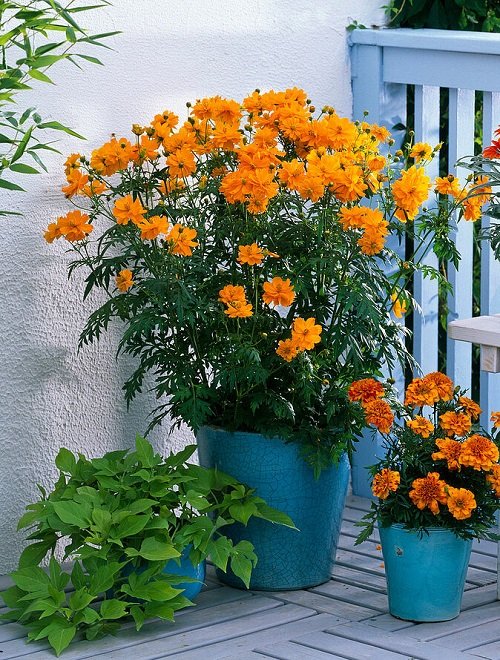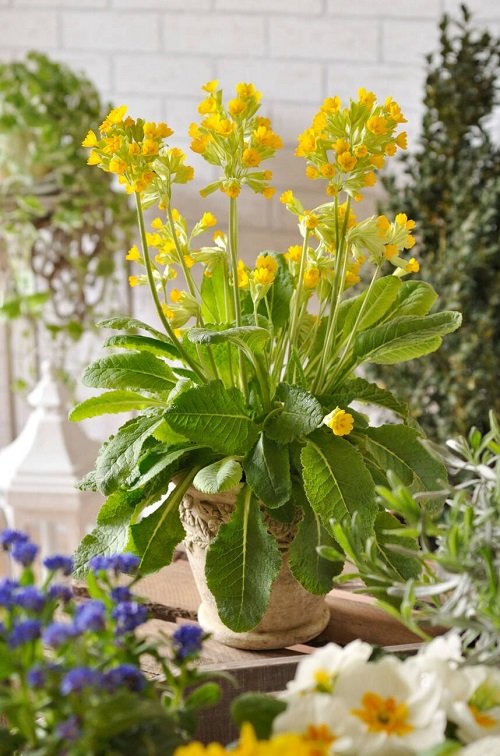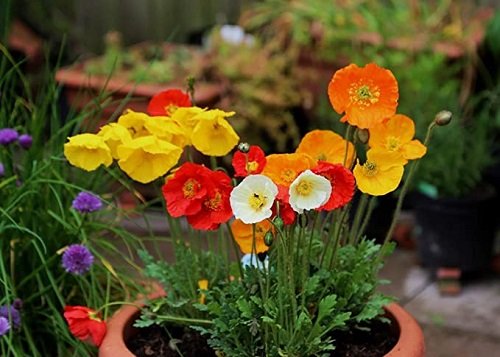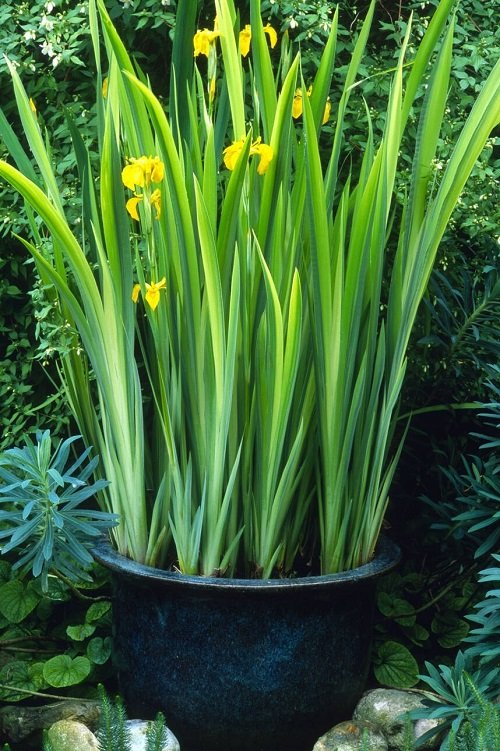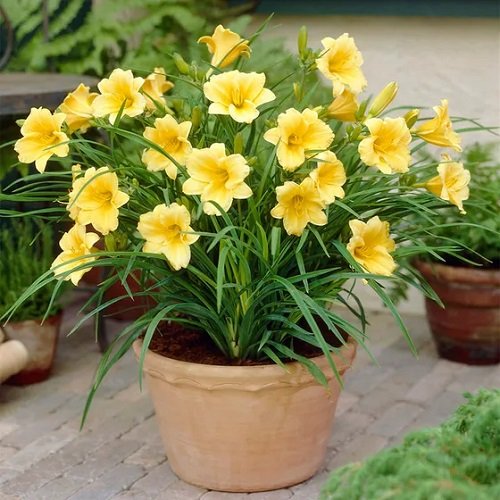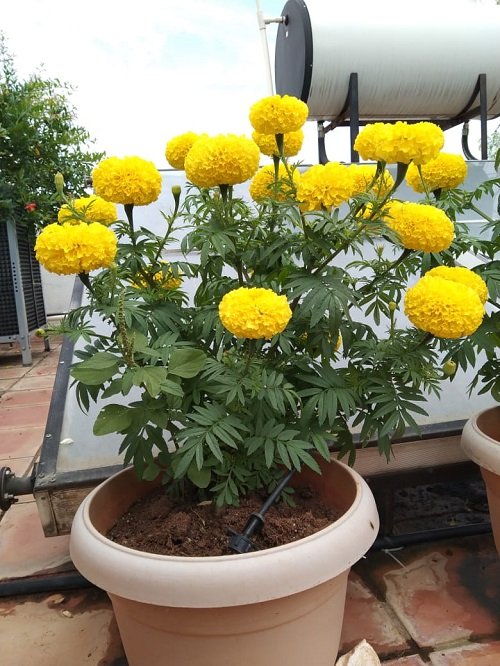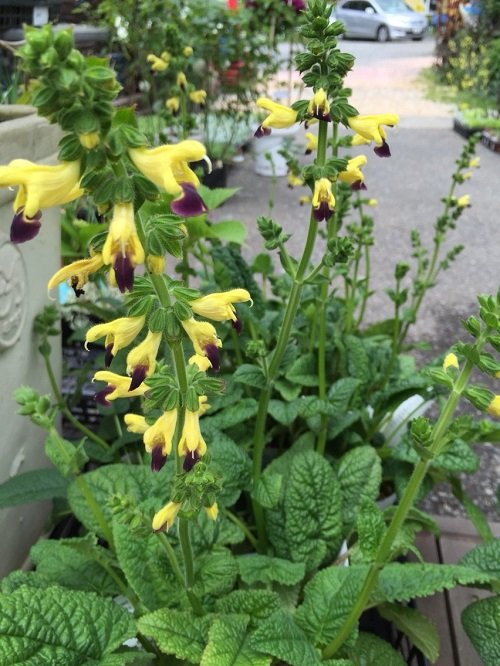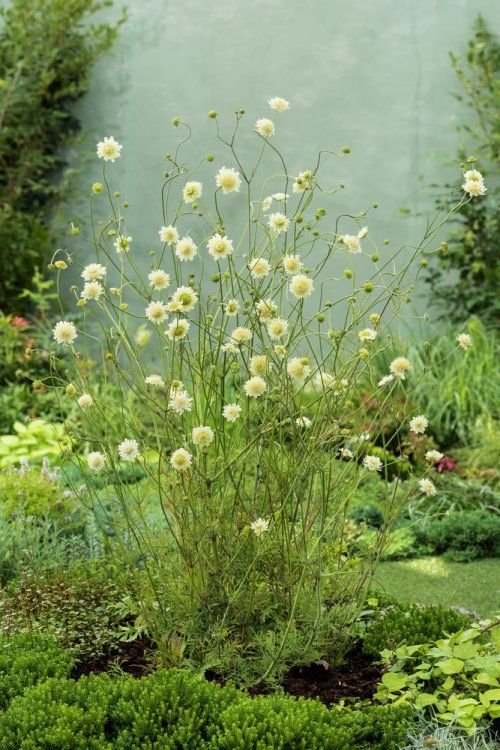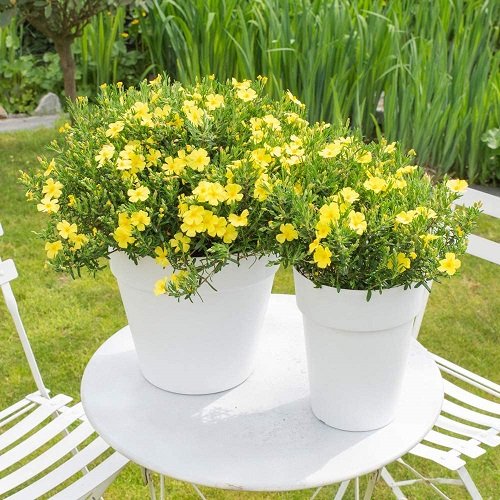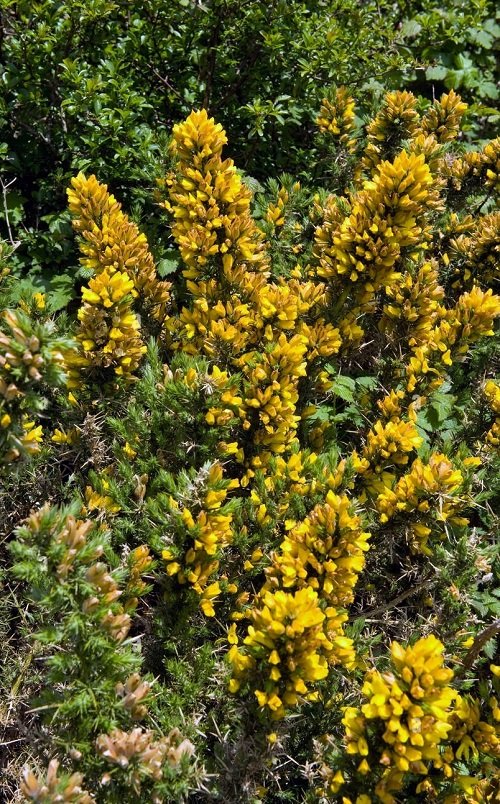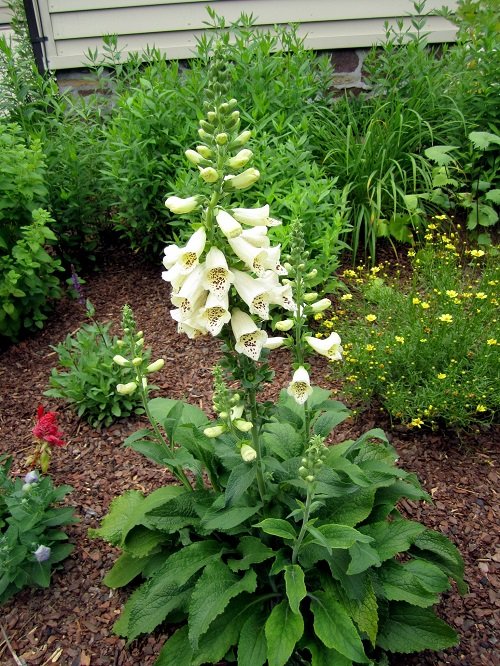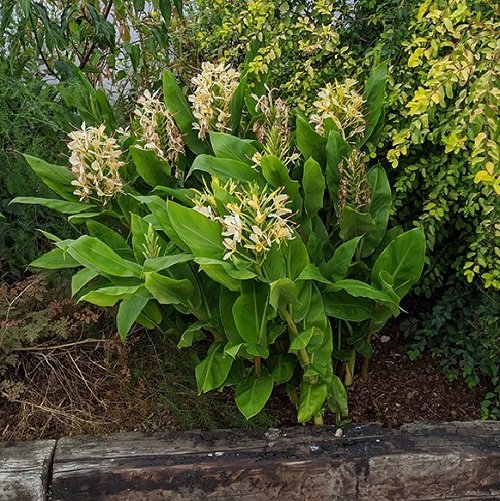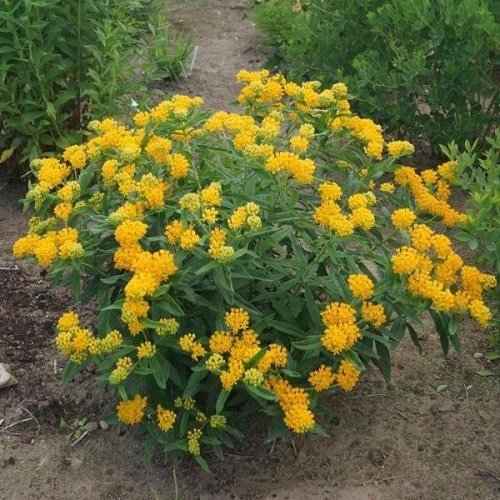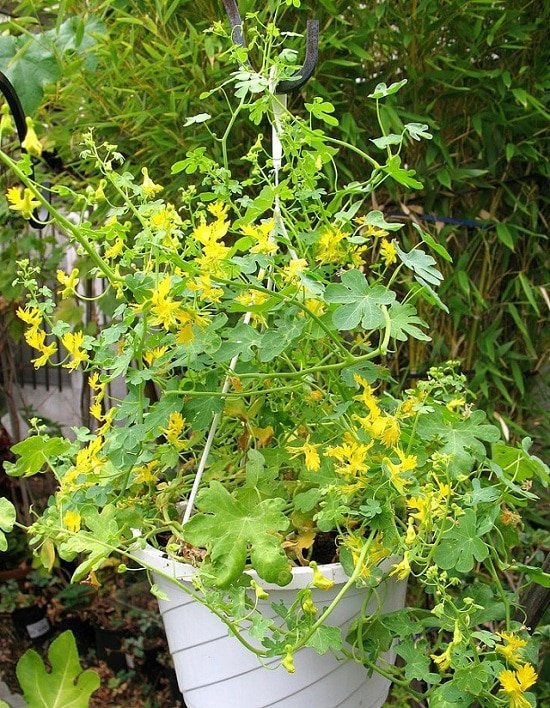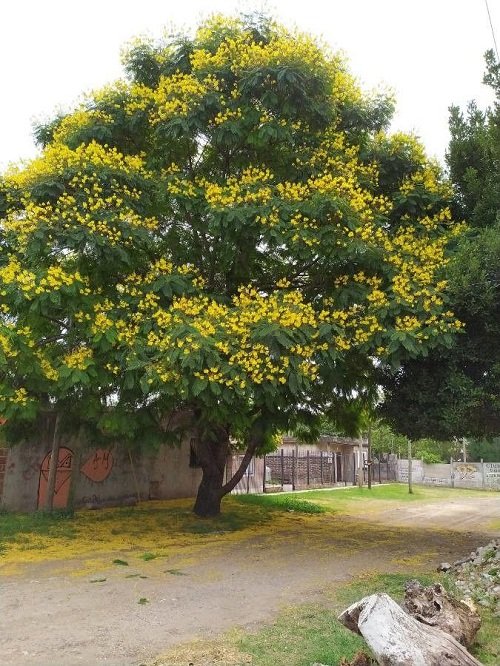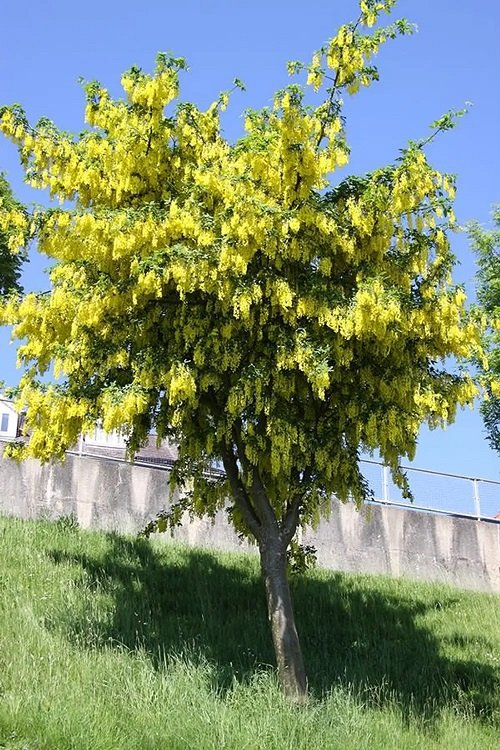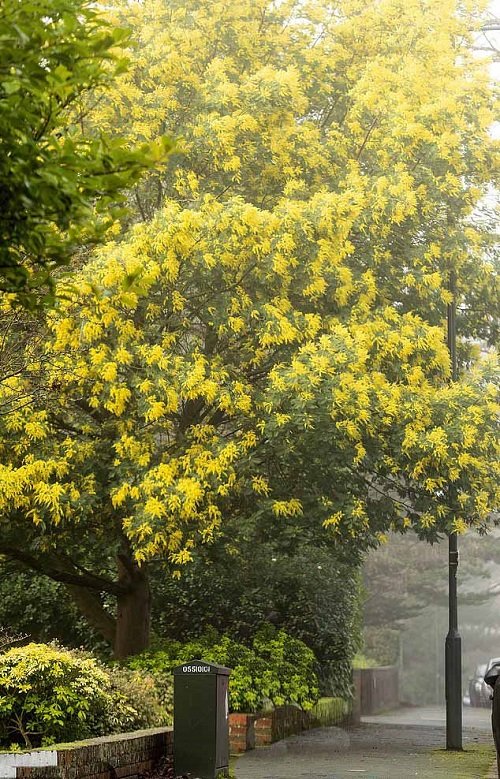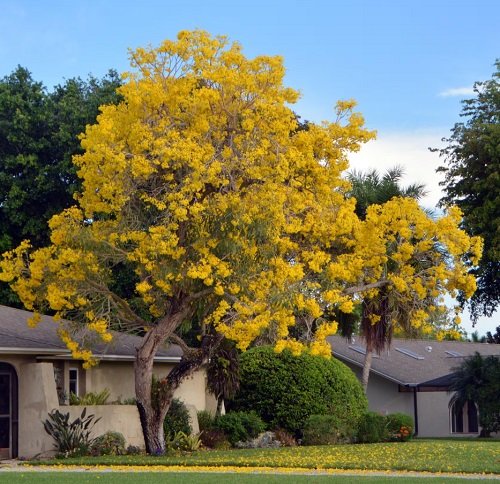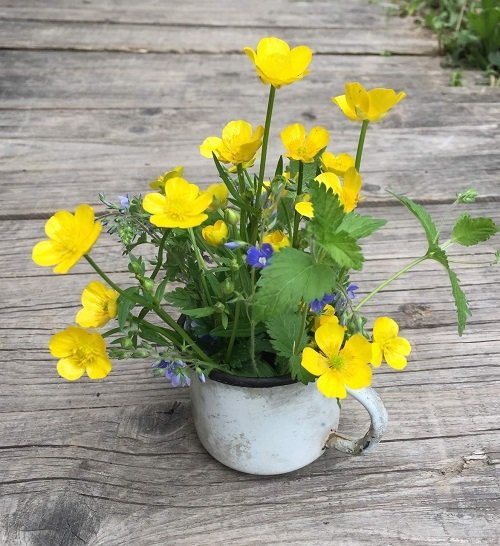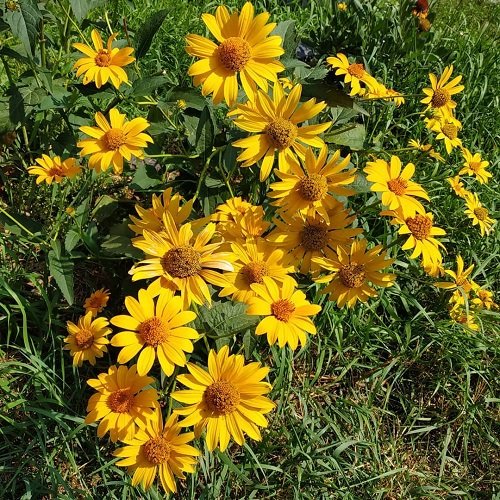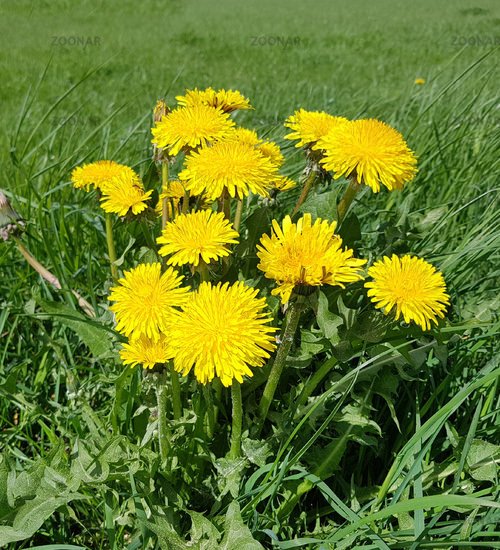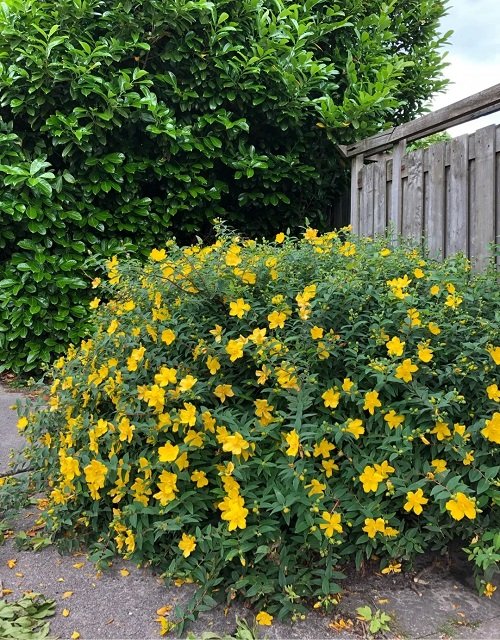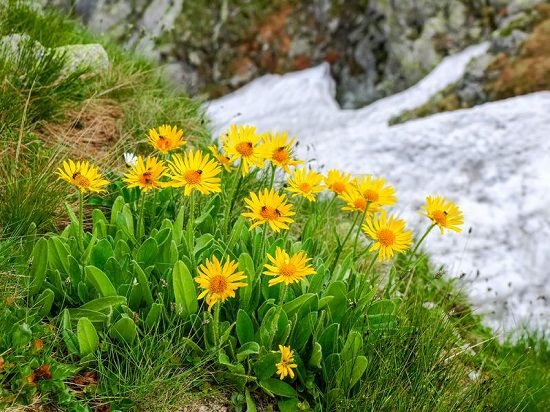Since Yellow is a color of hope, happiness, and positivity, you can grow these different Types of Yellow Flowers to cheer up your home!
Join us on a journey through the world of Yellow flowers, where nature’s beauty and symbolism intertwine to create a tapestry of fascination and delight.
Yellow Flowers Meaning
Yellow flowers carry a special meaning in the language of blooms. Their bright and cheerful hue often represents happiness, joy, and friendship. When you gift someone yellow flowers, you’re essentially sharing a burst of sunshine and positivity with them.
These blooms can be like a warm hug, lifting spirits and spreading good vibes. Yellow flowers are also known to symbolize the following.
1. Joy and Happiness
Yellow flowers often symbolize joy and happiness. Their bright color is like a smile from nature, radiating positivity and cheerfulness. When you give someone yellow blooms, you’re sharing a little piece of sunshine to brighten their day.
2. Friendship and Companionship
Yellow flowers are a classic symbol of friendship. They represent the bond of companionship and the warmth of good friends. Gifting yellow blossoms can convey your appreciation for someone’s friendship and the happiness they bring into your life.
3. New Beginnings
Just as the sun rises to mark a new day, Yellow flowers can signify fresh starts and new beginnings. They are a symbol of hope and the promise of a brighter future. Giving yellow blooms can be a thoughtful gesture to support someone on a new journey or adventure.
Best Red Flower Names
4. Positivity and Optimism
Yellow flowers are associated with a positive outlook on life. They remind us to focus on the bright side and maintain an optimistic attitude. Sharing yellow blossoms with someone can serve as a reminder to stay positive, even during challenging times.
5. Friendship and Get-Well Wishes
Yellow flowers are a popular choice for expressing get-well wishes and sending a message of recovery and healing. They convey the idea that better days are ahead and that you’re thinking of the person’s well-being.
Yellow Flower Bushes
1. Billy Buttons
Botanical Name: Craspedia globosa
- Type: Perennial
- Origin: Australia
- Size: 1 – 3 feet tall
- Light Requirements: Full sun
- USDA Hardiness Zones: 8 – 11
Billy Buttons, with their bright Yellow flowers that are globe-shaped, exude a playful charm that’s as captivating as a sunny day.
Growing Tip: Plant these charming, globe-shaped flowers in well-drained soil under full sun. To keep them thriving, maintain moderate soil moisture and consider deadheading to encourage a continuous burst of sunny blooms.
Here are the Best Types of Orange Flowers
2. Yellow Corydalis
Botanical Name: Pseudofumaria lutea
- Type: Perennial
- Origin: Europe and Asia
- Size: 12 – 18 inches tall
- Light Requirements: Partial to full shade
- USDA Hardiness Zones: 4 – 8
The tender, lemon-hued blossoms of Yellow Corydalis create an enchanting and delicate presence in any garden.
Growing Tip: Thrives in partial shade with rich, well-draining soil. Keep soil consistently moist. Minimal pruning required. Watch for aphids and slugs as potential pests.
3. Yellow Cosmos
Botanical Name: Cosmos sulphureus
- Type: Annual
- Origin: Central and North America
- Size: 2 – 4 feet tall
- Light Requirements: Full sun
- USDA Hardiness Zones: 2 – 11
Bursting with vibrant Yellow flowers that radiate out from a central disk, Yellow Cosmos brings a cheerful pop of color to any outdoor space.
Growing Tip: Plant in full sun with well-drained soil. Water regularly but allow the soil to dry slightly between waterings. Deadhead spent flowers to promote continuous blooming. Look out for aphids and whiteflies.
4. Yellow Columbine
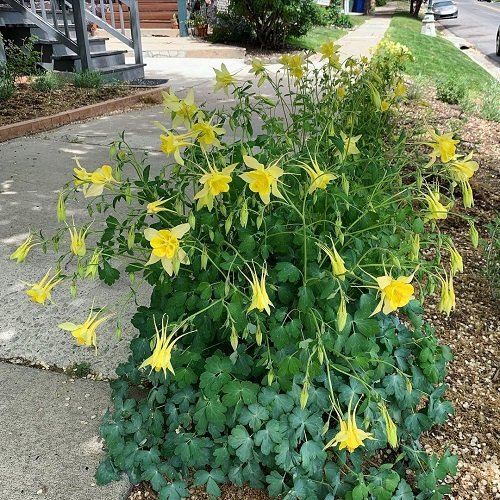 carolcarolfoster
carolcarolfoster
Botanical Name: Aquilegia chrysantha
- Type: Perennial
- Origin: North America
- Size: 1 – 3 feet tall
- Light Requirements: Partial shade to full sun
- USDA Hardiness Zones: 3 – 9
Featuring intricate, lantern-shaped flowers with spurs that extend out from the back, Yellow Columbines bring an exotic and whimsical touch to any garden.
Growing Tip: Prefers well-drained soil with partial shade. Keep soil moderately moist. Prune lightly after flowering. Watch for leaf miners and aphids as potential pests.
5. Yellow Primrose
Botanical Name: Primula veris
- Type: Perennial
- Origin: Europe and Asia
- Size: 6 – 12 inches tall
- Light Requirements: Full sun to partial shade
- USDA Hardiness Zones: 3 – 9
Boasting a vibrant yellow hue and a profusion of delicate petals, Yellow Primroses add a cheerful touch to any garden bed or container.
Growing Tip: Plant in well-draining soil with partial shade. Water consistently to keep the soil evenly moist. Deadhead spent Yellow flowers to encourage reblooming. Look out for aphids and slugs.
6. Geranium
Botanical Name: Geranium
- Type: Perennial
- Origin: Various species, global distribution
- Size: Varies by species and cultivar
- Light Requirements: Full sun to partial shade
- USDA Hardiness Zones: Varies by species and cultivar
The perennial blue flowers ranging from white to deep blue in color, bloom from June till frost. It is an amazing perennial plant with blue and Yellow flowers.
Growing Tip: Requires well-drained soil and full sun. Water deeply but infrequently. Deadhead spent flowers regularly. Keep an eye out for aphids and spider mites.
7. Yellow Alpine Poppy
Botanical Name: Papaver alpinum
- Type: Perennial
- Origin: Europe and Asia
- Size: 6 – 12 inches tall
- Light Requirements: Full sun to partial shade
- USDA Hardiness Zones: 3 – 9
With its soft, papery petals and vivid yellow hue, the Yellow Alpine Poppy brings delicate beauty and understated elegance to any home.
Growing Tip: Thrives in well-drained soil with full sun. Water sparingly once established. Minimal pruning is needed; remove spent Yellow flowers. Watch for aphids and slugs.
8. Yellow Bird’s Foot Trefoil
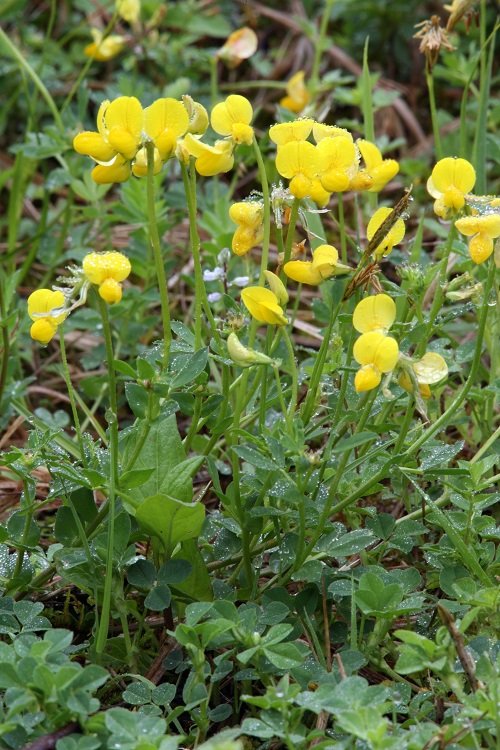 shutterstock/Bildagentur Zoonar GmbH
shutterstock/Bildagentur Zoonar GmbH
Botanical Name: Lotus corniculatus
- Type: Perennial
- Origin: Europe and Asia
- Size: 1 – 3 feet tall
- Light Requirements: Full sun
- USDA Hardiness Zones: 3 – 9
With its dainty, clover-like leaves and clusters of bright Yellow flowers, the Yellow Bird’s Foot Trefoil adds a charming and whimsical touch to any wildflower meadow or grassy area.
Growing Tip: Plant in sunny areas with well-draining soil. Water moderately. Minimal pruning required; remove spent flowers. Watch for aphids and weevils.
9. Yellow Flag Iris
Botanical Name: Iris pseudacorus
- Type: Perennial
- Origin: Europe and Asia
- Size: 2 – 4 feet tall
- Light Requirements: Full sun to partial shade
- USDA Hardiness Zones: 4 – 9
With their sword-like leaves and tall, sturdy stalks topped with cheerful yellow blooms, Yellow Flag Irises make a stunning addition to any water feature or pond.
Growing Tip: Prefers moist soil in full sun to partial shade. Keep soil consistently moist. Minimal pruning; remove dead leaves. Watch for aphids and iris borers.
10. Yarrow
Botanical Name: Achillea millefolium
- Type: Perennial
- Origin: North America, Europe, Asia
- Size: 1 – 3 feet tall
- Light Requirements: Full sun
- USDA Hardiness Zones: 3 – 9
Borders and open meadows are what it’s perfect for due to the low maintenance. Combine it with companions like lavender and purple sage, and it’ll beautify your garden with its Yellow flowers.
Growing Tip: Plant in well-drained soil with full sun. Water sparingly once established. Minimal pruning; deadhead spent blooms. Keep an eye out for aphids and powdery mildew.
11. Carnation
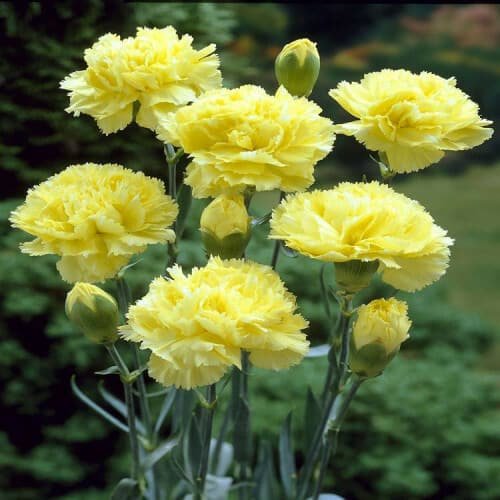
Botanical Name: Dianthus caryophyllus
- Type: Perennial
- Origin: Mediterranean region
- Size: 1 – 3 feet tall
- Light Requirements: Full sun to partial shade
- USDA Hardiness Zones: 3 – 9
Carnations are most popular for the wide range of colors they come in, as these pretty, full Yellow flowers of serrated petals grow on a long, slim stalk.
Growing Tip: Requires well-drained soil and full sun. Water deeply but infrequently to prevent root rot. Deadhead spent blooms regularly. Watch for aphids and rust.
12. Zinnia
Botanical Name: Zinnia
These cheery flowers attract not only humans but bees and butterflies too, and they don’t fade early.
- Type: Annual
- Origin: North and South America
- Size: 6 inches – 4 feet tall (varies by cultivar)
- Light Requirements: Full sun
- USDA Hardiness Zones: 2 – 11
Growing Tip: Plant in well-draining soil with full sun. Water moderately, avoiding overhead watering. Deadhead spent Yellow flowers for continuous blooming. Keep an eye out for aphids and mildew.
13. Lily

Botanical Name: Lilium
- Type: Perennial
- Origin: Various species, global distribution
- Size: Varies by species and cultivar
- Light Requirements: Full sun to partial shade
- USDA Hardiness Zones: Varies by species and cultivar
Lilies have always been a prized possession for gardeners around the globe, and we all know they deserve it. You can choose many varieties of Yellow flowers.
Growing Tip: Plant bulbs in well-drained soil with full sun. Water consistently but avoid waterlogged conditions. Deadhead spent blooms. Watch for aphids and lily beetles.
14. Daylily
Botanical Name: Hemerocallis
- Type: Perennial
- Origin: Asia and North America
- Size: 1 – 4 feet tall
- Light Requirements: Full sun to partial shade
- USDA Hardiness Zones: 3 – 9
As the name suggests, you’ll enjoy these flowers from morning till evening as they die at night. It is an amazing house plant with Yellow flowers.
Growing Tip: Thrives in well-draining soil with full sun to partial shade. Water deeply but infrequently. Remove spent blooms to encourage reblooming. Watch for aphids and spider mites.
15. Dutch Hyacinth

Botanical Name: Hyacinthus orientalis ‘Yellow Queen’
- Type: Perennial bulb
- Origin: Mediterranean region
- Size: 6 – 12 inches tall
- Light Requirements: Full sun to partial shade
- USDA Hardiness Zones: 3 – 9
Hyacinth is a ball-shaped cluster of Yellow flowers on top of a slim stem that grows from a spring-flowering bulb.
Growing Tip: Plant bulbs in well-drained soil in the fall. Water moderately. Minimal pruning is needed; remove dead leaves. Look out for aphids and bulb flies.
16. Marigold
Botanical Name: Tagetes
- Type: Annual
- Origin: Americas, Africa
- Size: 6 inches – 3 feet tall (varies by cultivar)
- Light Requirements: Full sun
- USDA Hardiness Zones: 2 – 11
A well-known flowering plant to add color and cheerfulness to your garden. You can also grow it in your vegetable garden beds among vegetable plants with Yellow flowers.
Growing Tip: Prefers well-drained soil and full sun. Water moderately, allowing the soil to dry between waterings. Deadhead spent flowers regularly. Watch for aphids and spider mites.
17. Rose
Botanical Name: Rosa
- Type: Perennial shrub
- Origin: Asia, Europe, North America
- Size: Varies by species and cultivar
- Light Requirements: Full sun
- USDA Hardiness Zones: Varies by species and cultivar
Roses are prized both for their unmatched beauty and fragrance and need no description.
Growing Tip: Requires well-amended soil and full sun. Water deeply but infrequently. Prune in late winter or early spring to maintain shape. Keep an eye out for aphids and black spot.
18. Lesser Celandine
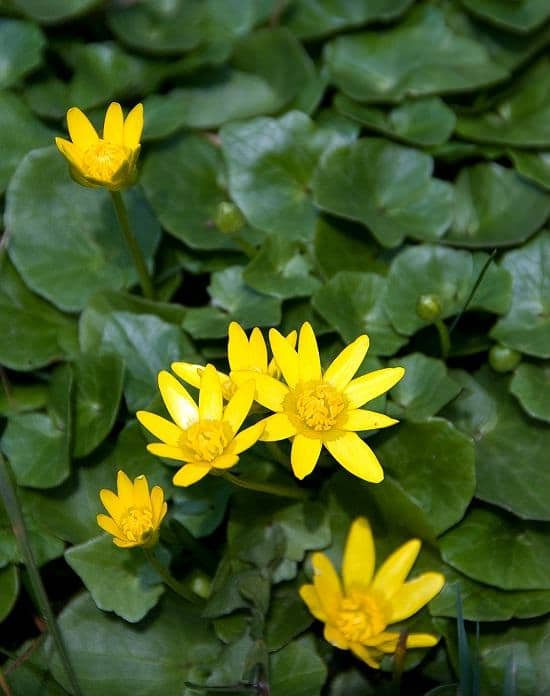
Botanical Name: Ficaria Verna
- Type: Perennial
- Origin: Europe and Asia
- Size: 4 – 8 inches tall
- Light Requirements: Full sun to partial shade
- USDA Hardiness Zones: 4 – 8
This low-growing plant has beautiful star-shaped flowers that rise above the foliage. It is one of the top choices among low-growing plants with Yellow flowers.
Growing Tip: Ideal for ground cover in moist, well-draining soil. Water consistently. Minimal pruning required; remove dead foliage. Watch for aphids and slugs.
19. Yellow Lupine

East Bay Wilds
Botanical Name: Lupinus densiflorus
- Type: Perennial
- Origin: North America
- Size: 1 – 3 feet tall
- Light Requirements: Full sun to partial shade
- USDA Hardiness Zones: 4 – 8
Sporting tall spikes of sunny yellow blossoms, Yellow Lupines create a bold and striking statement in any garden or wildflower meadow.
Growing Tip: Plant in well-drained soil with full sun. Water moderately. Minimal pruning needed; remove spent spikes. Look out for aphids and aphid-loving ants.
20. Begonia

Botanical Name: Begonia
- Type: Annual or perennial (varies by species)
- Origin: Tropical and subtropical regions
- Size: Varies by species and cultivar
- Light Requirements: Part to full shade
- USDA Hardiness Zones: Varies by species and cultivar
There are wide hybrid yellow begonia varieties you can choose from, just like this “Begonia Roseform Yellow.”
Growing Tip: Grow in filtered sunlight with well-drained soil. Water sparingly to prevent root rot. Deadhead spent Yellow flowers for continuous flowering. Keep an eye out for aphids and mealybugs.
21. Daffodil
Botanical Name: Narcissus
- Type: Perennial bulb
- Origin: Europe and North Africa
- Size: 6 – 24 inches tall
- Light Requirements: Full sun to partial shade
- USDA Hardiness Zones: 3 – 9
Daffodils have long been gardeners’ favorite as Yellow flowers because of their exquisite beauty and low maintenance. They’re beautiful cut flowers as well!
Growing Tip: Plant bulbs in well-drained soil in the fall. Water moderately. Minimal pruning needed; remove dead leaves. Watch for aphids and narcissus bulb fly.
22. Freesia

Botanical Name: Freesia
- Type: Perennial bulb
- Origin: South Africa
- Size: 6 – 20 inches tall
- Light Requirements: Full sun to partial shade
- USDA Hardiness Zones: 9 – 11
Freesias release a captivating fragrance from their delicate Yellow flowers, making them a fragrant delight in gardens and bouquets.
Growing Tip: Plant in well-draining soil with full sun. Water moderately, allowing the soil to dry between waterings. Deadhead spent blooms. Watch for aphids and thrips.
23. Yellow Petunia
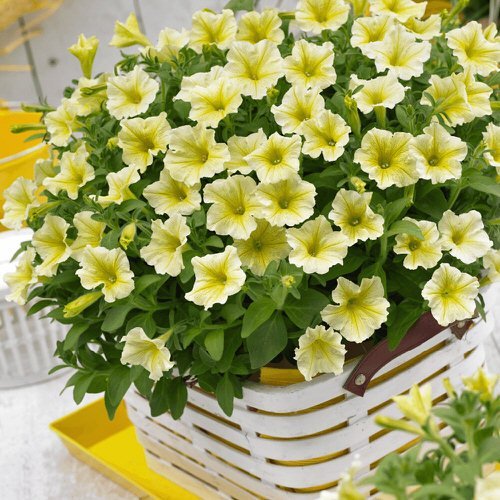
Botanical Name: Petunia ‘Easy Wave Yellow’
- Type: Annual
- Origin: South America
- Size: 6 – 18 inches tall
- Light Requirements: Full sun to partial shade
- USDA Hardiness Zones: 9 – 11
Though the flowers are not entirely yellow, they have a pleasant yellow tint on the white petals that gets more saturated at the center.
Growing Tip: Prefers well-drained soil with full sun. Water moderately, avoiding overhead watering. Deadhead spent flowers. Keep an eye out for aphids and slugs.
24. Yellow Lantana

Botanical Name: Lantana camara ‘Yellow Trailing’
- Type: Perennial
- Origin: Tropical regions of the Americas
- Size: 1 – 4 feet tall
- Light Requirements: Full sun
- USDA Hardiness Zones: 8 – 11
Easy to grow and maintain, this lantana variety will surely attract you with its bright Yellow flowers that come in clusters!
Growing Tip: Thrives in well-draining soil with full sun. Water sparingly once established. Prune to maintain shape. Watch for aphids and whiteflies.
25. Hibiscus
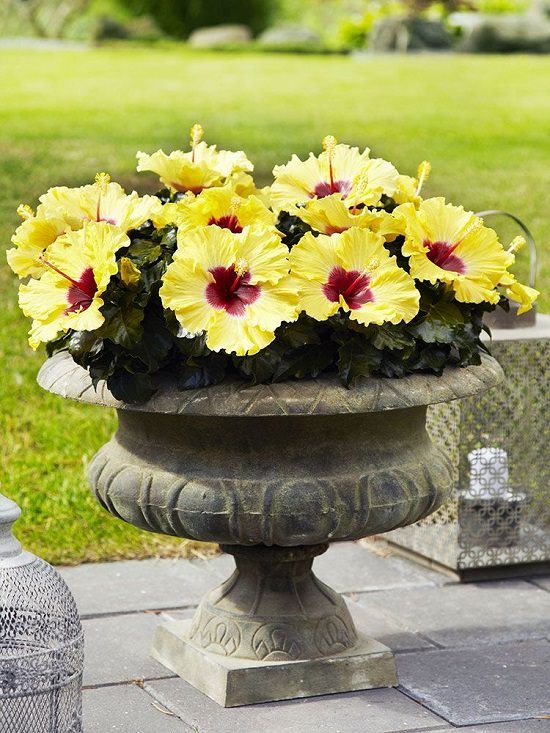
Botanical Name: Hibiscus
- Type: Perennial shrub
- Origin: Tropical and subtropical regions worldwide
- Size: 3 – 15 feet tall (varies by species)
- Light Requirements: Full sun to partial shade
- USDA Hardiness Zones: 4 – 11 (varies by species)
If you are into large, showy flowers, yellow hibiscuses make for the perfect bet! They are also available in many shades.
Growing Tip: Plant in well-drained soil with full sun. Water moderately, keeping the soil consistently moist. Prune to shape as needed for these Yellow flowers. Look out for aphids and whiteflies.
26. Canna Lily

Botanical Name: Canna
- Type: Perennial bulb
- Origin: South and Central America, Africa, Asia
- Size: 2 – 8 feet tall (varies by species)
- Light Requirements: Full sun to partial shade
- USDA Hardiness Zones: 7 – 11 (varies by species)
Just like Calla lilies, they, too, are not related to Lillies. They’re close to the ginger and banana families.
Growing Tip: Requires well-drained soil and full sun. Water moderately, ensuring good drainage. Deadhead spent Yellow flowers. Keep an eye out for aphids and caterpillars.
27. Busy Lizzie

sandra.sequeira.12
Botanical Name: Impatiens walleriana
- Type: Annual or perennial (varies by species)
- Origin: Africa and Asia
- Size: 6 – 18 inches tall
- Light Requirements: Shade to partial shade
- USDA Hardiness Zones: 10 – 11 (varies by species)
Busy Lizzie is also called Impatiens, and it will thrive best if it is planted right next to one another. Busy Lizzie brings a pop of color to any garden with its Yellow flowers!
Growing Tip: Prefers well-drained soil and partial to full shade. Water consistently to keep soil evenly moist. Minimal pruning needed; remove dead foliage. Watch for aphids and spider mites.
28. Dahlia

adrbulbs
Botanical Name: Dahlia
- Type: Perennial tuber
- Origin: Mexico and Central America
- Size: 1 – 6 feet tall (varies by cultivar)
- Light Requirements: Full sun to partial shade
- USDA Hardiness Zones: 7 – 11 (varies by cultivar)
Whether it’s yellow, red, white, orange, or purple, the big radiant dahlia blooms look amazing in any color.
Growing Tip: Plant in well-draining soil with full sun. Water moderately, avoiding overhead watering. Prune tall varieties of Yellow flowers for support. Look out for aphids and earwigs.
29. Common Sunflower

homefortheharvest
Botanical Name: Helianthus annuus
- Type: Annual
- Origin: North America
- Size: 3 – 12 feet tall (varies by cultivar)
- Light Requirements: Full sun
- USDA Hardiness Zones: 4 – 9
The iconic Common Sunflower boasts its Yellow flowers with a golden disk and radiant petals, symbolizing the beauty of sunny days.
Growing Tip: Thrives in well-drained soil with full sun. Water moderately, keeping soil evenly moist. Deadhead spent blooms to prevent self-seeding. Watch for aphids and birds.
30. Chrysanthemum
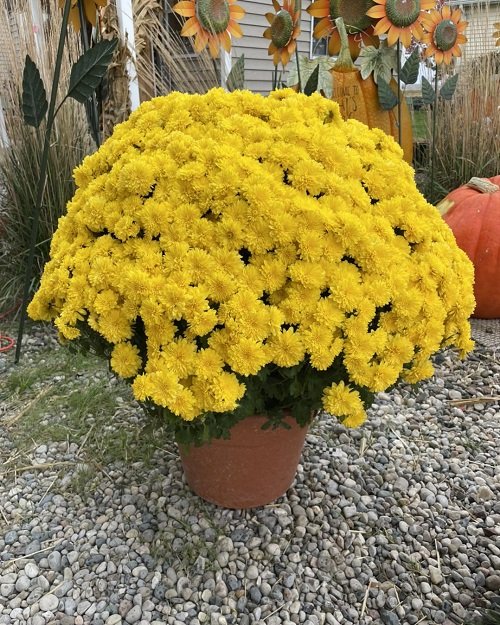
Jason’s Pumpkin Patch
Botanical Name: Chrysanthemum
- Type: Perennial
- Origin: Asia and Europe
- Size: 1 – 3 feet tall
- Light Requirements: Full sun to partial shade
- USDA Hardiness Zones: 5 – 9
This popular flowering plant is easy to grow and popular in almost every country in the world.
Growing Tip: Requires well-drained soil and full sun. Water moderately, avoiding overhead watering. Prune these Yellow flowers to maintain shape. Keep an eye out for aphids and spider mites.
31. Yellow Monkeyflower
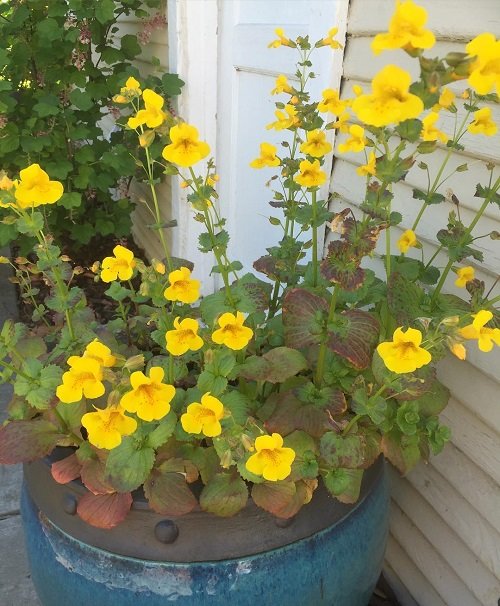
manzanitamaniac
Botanical Name: Mimulus guttatus
- Type: Perennial
- Origin: North America, South America
- Size: 6 – 24 inches tall
- Light Requirements: Full sun to partial shade
- USDA Hardiness Zones: 4 – 10
With their unique, snapdragon-like blooms in a vibrant shade of yellow, Yellow Monkeyflowers add a playful and whimsical touch to any garden or container planting.
Growing Tip: Plant in moist soil with partial shade. Keep the soil consistently damp. Prune to remove dead growth. Watch for aphids and rust as potential pests.
32. Bulbine
Botanical Name: Bulbine
- Type: Perennial succulent
- Origin: South Africa
- Size: 6 – 18 inches tall
- Light Requirements: Full sun
- USDA Hardiness Zones: 9 – 11
The tubers resemble bulbs in shape and are adorned with small star-shaped Yellow flowers.
Growing Tip: Thrives in well-draining soil with full sun. Water moderately, allowing the soil to dry between waterings. Minimal pruning needed; remove dead leaves. Look out for aphids and snails.
33. Yellow Sage
Botanical Name: Salvia flava
- Type: Perennial shrub
- Origin: Mediterranean region, North America
- Size: 2 – 3 feet tall
- Light Requirements: Full sun
- USDA Hardiness Zones: 8 – 11
With its aromatic, silvery-green foliage and striking Yellow flowers, Yellow Sage adds texture and visual interest to any herb garden or landscape. It is one of the best green plants with yellow flowers.
Growing Tip: Plant in well-draining soil with full sun. Water moderately, allowing the soil to dry between waterings. Prune to maintain shape. Watch for aphids and spider mites.
34. Hellebores
Botanical Name: Helleborus
- Type: Perennial
- Origin: Europe and Asia
- Size: 12 – 18 inches tall
- Light Requirements: Partial to full shade
- USDA Hardiness Zones: 4 – 9
Blooming in early spring, they indicate that the gloomy winter days are now behind us and enrich the garden with Yellow flowers.
Growing Tip: Prefers well-drained soil in partial shade. Keep soil consistently moist. Minimal pruning required; remove old foliage. Watch for aphids and leaf spot.
35. Yellow Pincushion Flower
Botanical Name: Scabiosa ochroleuca
- Type: Perennial
- Origin: Europe
- Size: 12 – 18 inches tall
- Light Requirements: Full sun
- USDA Hardiness Zones: 4 – 9
The compact, globe-like blooms of the Yellow Pincushion Flower are a cheerful addition to any rock garden or container planting.
Growing Tip: Plant in well-draining soil with full sun. Water moderately, allowing the soil to dry between waterings. Deadhead spent blooms. Look out for aphids and mildew.
36. Yellow Rockrose
Botanical Name: Cistus ladanifer
- Type: Perennial shrub
- Origin: Mediterranean region
- Size: 2 – 5 feet tall
- Light Requirements: Full sun
- USDA Hardiness Zones: 8 – 11
With its showy, crinkled petals and dark yellow center, the Yellow Rockrose adds a bold and striking touch to any Mediterranean or drought-tolerant landscape.
Growing Tip: Thrives in well-drained soil with full sun. Water sparingly once established. Minimal pruning needed; remove dead growth. Watch for aphids and scale insects.
37. Calla Lily
Botanical Name: Zantedeschia
- Type: Perennial tuber
- Origin: South Africa
- Size: 1 – 3 feet tall (varies by cultivar)
- Light Requirements: Full sun to partial shade
- USDA Hardiness Zones: 8 – 10
Also known as Arum lilies, they’re not at all related to lilies but look amazing with their Yellow flowers.
Growing Tip: Plant bulbs in well-drained soil in partial shade. Keep soil consistently damp. Minimal pruning required; remove dead leaves. Watch for aphids and slugs.
38. Yellow Gorse
Botanical Name: Ulex europaeus
- Type: Perennial shrub
- Origin: Europe and North Africa
- Size: 3 – 6 feet tall
- Light Requirements: Full sun
- USDA Hardiness Zones: 5 – 9
Boasting an abundance of tiny Yellow flowers that cover the branches like a golden veil, Yellow Gorse creates a dramatic and eye-catching display in any coastal or heathland landscape.
Growing Tip: Grow in well-drained soil with full sun. Water sparingly once established. Minimal pruning needed; remove dead branches. Watch for aphids and caterpillars.
39. Bird of Paradise
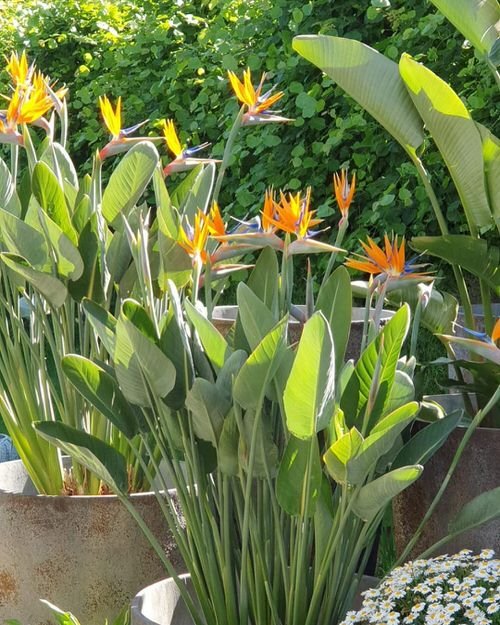
oestijnrooslonderzeel
Botanical Name: Strelitzia reginae
- Type: Perennial
- Origin: South Africa
- Size: 3 – 30 feet tall (varies by species)
- Light Requirements: Full sun to partial shade
- USDA Hardiness Zones: 9 – 11 (varies by species)
Bird of Paradise is also known as Strelitzia and is a perennial flower, and the yellow variety Strelitzia reginae ‘Mandela’s Gold’ is very exotic!
Growing Tip: Plant in well-draining soil with full sun. Water moderately, allowing the soil to partially dry between waterings. Minimal pruning is needed; remove yellow leaves. Look out for aphids and mealybugs.
40. Yellow Foxglove
Botanical Name: Digitalis grandiflora
- Type: Biennial or perennial
- Origin: Europe and North America
- Size: 2 – 5 feet tall
- Light Requirements: Full sun to partial shade
- USDA Hardiness Zones: 4 – 8
With their tall, spire-like stems and trumpet-shaped Yellow flowers, Yellow Foxgloves bring a regal, stately beauty to any garden.
Growing Tip: Prefers well-drained soil in partial shade. Keep soil consistently moist. Prune spent flower spikes. Watch for aphids and slugs.
41. Yellow Lady’s Slipper
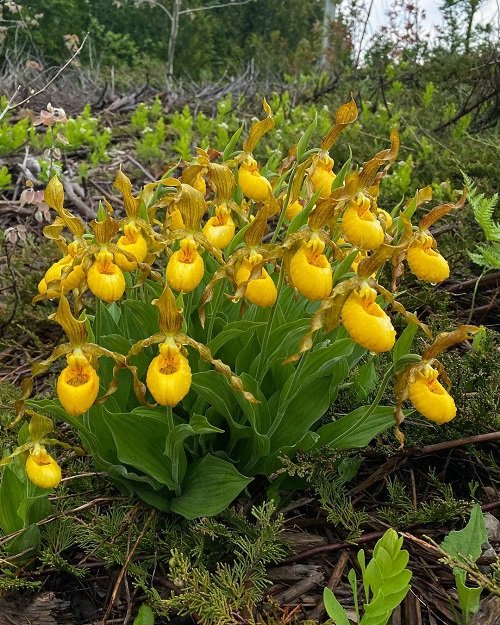
the_buckeye_botanist
Botanical Name: Cypripedium parviflorum
- Type: Perennial orchid
- Origin: North America, Europe, Asia
- Size: 6 – 15 inches tall
- Light Requirements: Partial shade to full shade
- USDA Hardiness Zones: 3 – 8
Graceful and delicate, Yellow Lady’s Slippers showcase unique, slipper-shaped blooms with bright yellow sepals and petals.
Growing Tip: Plant in well-drained soil with partial shade. Keep soil consistently damp. Minimal pruning required; remove dead foliage. Look out for aphids and snails.
42. Yellow Iris
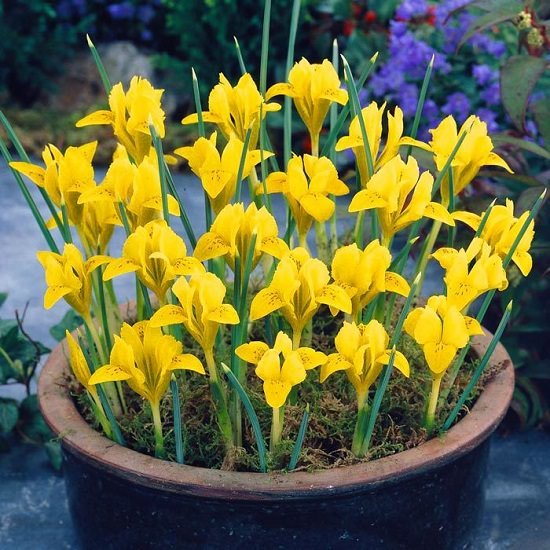
Botanical Name: Iris pseudacorus
- Type: Perennial
- Origin: Europe and Asia
- Size: 1 – 3 feet tall
- Light Requirements: Full sun to partial shade
- USDA Hardiness Zones: 3 – 9
The yellow iris is easy to grow so much that it is considered invasive in some regions. Its cute Yellow flowers look great in small pots. It is one of the best when it comes to different types of Yellow flowers names.
Growing Tip: Thrives in moist soil with full sun to partial shade. Keep soil consistently damp. Minimal pruning needed; remove dead leaves. Watch for aphids and iris borers.
43. Black-Eyed Susan
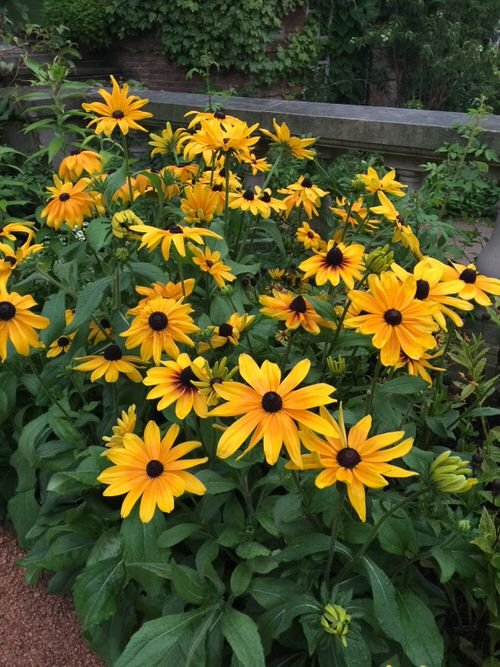
Botanical Name: Rudbeckia hirta
- Type: Perennial
- Origin: North America
- Size: 1 – 3 feet tall
- Light Requirements: Full sun to partial shade
- USDA Hardiness Zones: 3 – 9
The dark brown or purple center contrasts well with the yellow sepals of this wildflower.
Growing Tip: Plant in well-draining soil with full sun. Water moderately, allowing the soil to partially dry between waterings. Deadhead spent blooms. Look out for aphids and leafhoppers.
44. Goldenrod
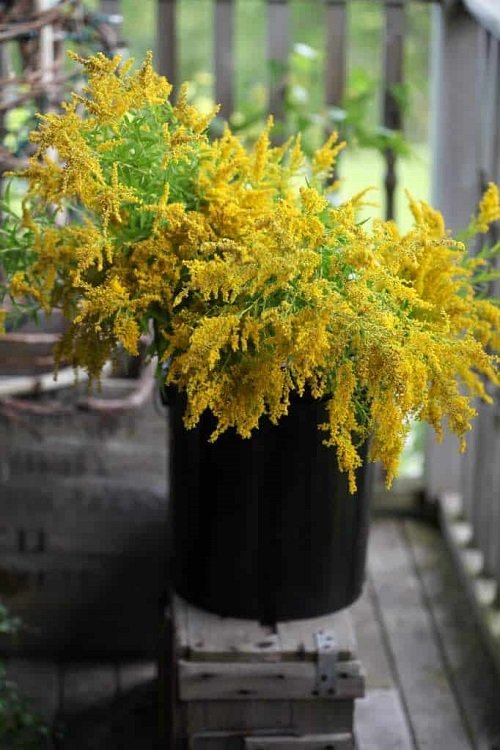
farmhouseandblooms
Botanical Name: Solidago
- Type: Perennial
- Origin: North America, Europe, Asia
- Size: 2 – 6 feet tall (varies by species)
- Light Requirements: Full sun to partial shade
- USDA Hardiness Zones: 3 – 9 (varies by species)
The plant doesn’t have the most beautiful foliage, and many consider it a weed, but the 2-3 months period in which it blooms is worth having.
Growing Tip: Grow in well-drained soil with full sun. Water moderately, keeping soil evenly moist. Minimal pruning needed; remove spent Yellow flowers. Watch for aphids and gall-inducing insects.
45. Yellow Ginger Lily
Botanical Name: Hedychium flavescens
- Type: Perennial rhizome
- Origin: Tropical regions worldwide
- Size: 3 – 8 feet tall (varies by species)
- Light Requirements: Full sun to partial shade
- USDA Hardiness Zones: 9 – 11 (varies by species)
Boasting large, exotic blooms in a bright shade of lemon yellow, Yellow Ginger Lilies add a tropical touch to any garden bed or outdoor living space.
Growing Tip: Prefers well-drained soil with partial shade. Keep soil consistently damp. Minimal pruning required; remove dead foliage. Watch for aphids and spider mites.
46. Tickseed

Botanical Name: Coreopsis
- Type: Perennial
- Origin: North America
- Size: 1 – 3 feet tall
- Light Requirements: Full sun
- USDA Hardiness Zones: 4 – 9
It definitely deserves a spot in your flower garden if not for the beauty, then for the long blooming time of its Yellow flowers.
Growing Tip: Plant in well-drained soil with full sun. Water moderately, allowing the soil to partially dry between waterings. Deadhead spent blooms for continuous flowering. Look out for aphids and leafhoppers.
47. Gerbera Daisy
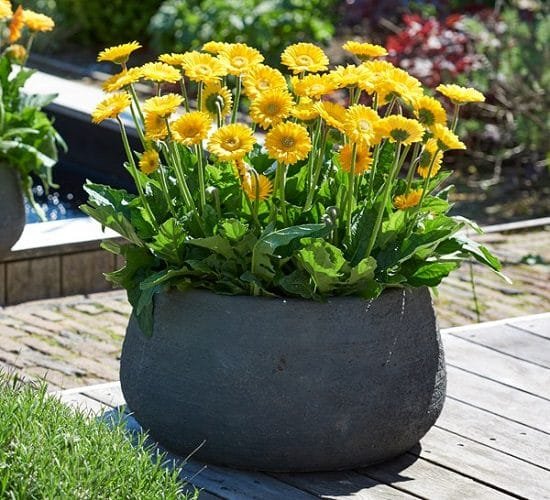
Botanical Name: Gerbera Jamesonii
- Type: Perennial
- Origin: Africa, Asia, South America
- Size: 6 – 18 inches tall (varies by cultivar)
- Light Requirements: Full sun to partial shade
- USDA Hardiness Zones: 8 – 11 (varies by cultivar)
You can even grow beautiful gerbera daisies indoors; learn more here. It is an amazing indoor plant with Yellow flowers.
Growing Tip: Requires well-drained soil and full sun. Water at the base to prevent leaf rot. Deadhead spent flowers regularly. Watch for aphids and whiteflies.
48. Yellow Elder
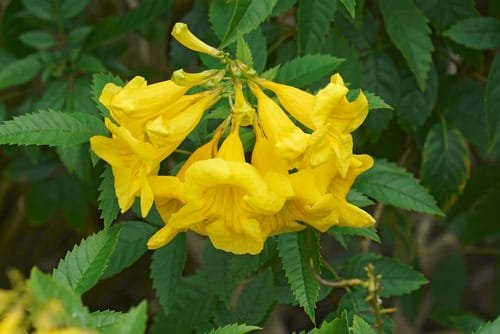
shutterstock/NickKurzenko
Botanical Name: Tecoma stans
- Type: Perennial shrub
- Origin: North and South America
- Size: 6 – 20 feet tall (varies by species)
- Light Requirements: Full sun to partial shade
- USDA Hardiness Zones: 8 – 11 (varies by species)
Also popular by the name of yellow bells, thanks to its bell-shaped Yellow flowers, the canary yellow shade of the blooms is truly eye-catching!
Growing Tip: Thrives in well-draining soil with full sun. Water moderately, especially during dry spells. Minimal pruning needed; remove dead branches. Watch for aphids and leafhoppers.
49. Yellow Butterfly Bush
Botanical Name: Buddleja × weyeriana ‘Honeycomb’
- Type: Perennial shrub
- Origin: China
- Size: 3 – 10 feet tall (varies by cultivar)
- Light Requirements: Full sun
- USDA Hardiness Zones: 5 – 9 (varies by cultivar)
The Butterfly Bush has lance-shaped leaves and arching branches and is one of the most fragrant shrubs with Yellow flowers.
Growing Tip: Plant in well-drained soil with full sun. Water moderately, allowing the soil to partially dry between waterings. Prune in late winter or early spring to maintain shape. Look out for aphids and caterpillars.
50. Yellow Oleander

Botanical Name: Cascabela thevetia
- Type: Perennial shrub
- Origin: Tropical regions worldwide
- Size: 6 – 20 feet tall
- Light Requirements: Full sun
- USDA Hardiness Zones: 10 – 11
Yellow Oleander, with its vibrant, funnel-shaped Yellow flowers, adds a touch of exotic beauty to gardens in warm climates.
Growing Tip: Grow in well-drained soil with full sun. Water moderately, allowing the soil to partially dry between waterings. Minimal pruning required; remove dead branches. Watch for aphids and scale insects.
Note: All parts of this plant are poisonous. Some even call it a suicide tree. Eating its leaves deliberately has serious medical consequences.
51. Yellow Wood Sorrel
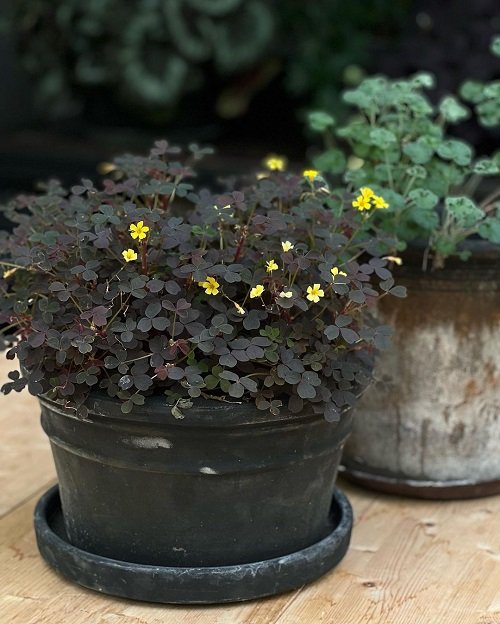
mariapaalmbacken
Botanical Name: Oxalis stricta
- Type: Perennial
- Origin: Global distribution
- Size: 4 – 12 inches tall
- Light Requirements: Full sun to partial shade
- USDA Hardiness Zones: 4 – 8
With its delicate, heart-shaped leaves and small, bright Yellow flowers, the Yellow Wood Sorrel adds subtle beauty and natural charm to any garden. It is undoubtedly one of the best plants with small yellow flowers.
Growing Tip: Plant in well-draining soil with partial shade. Keep soil consistently damp. Minimal pruning needed; remove dead foliage. Watch for aphids and slugs.
52. Evening Primroses
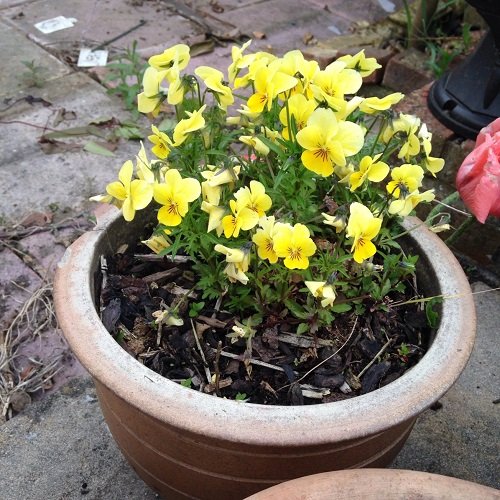
hollysnewhome
Botanical Name: Oenothera
- Type: Annual or perennial (varies by species)
- Origin: North and South America
- Size: Varies by species
- Light Requirements: Full sun
- USDA Hardiness Zones: Varies by species
The good thing about this little yellow wildflower is that it does not require much care, and even a novice gardener can grow it easily.
Growing Tip: Prefers well-drained soil in full sun. Water moderately, allowing the soil to partially dry between waterings. Minimal pruning needed; remove spent Yellow flowers. Look out for aphids and leafhoppers.
53. Prickly Pear
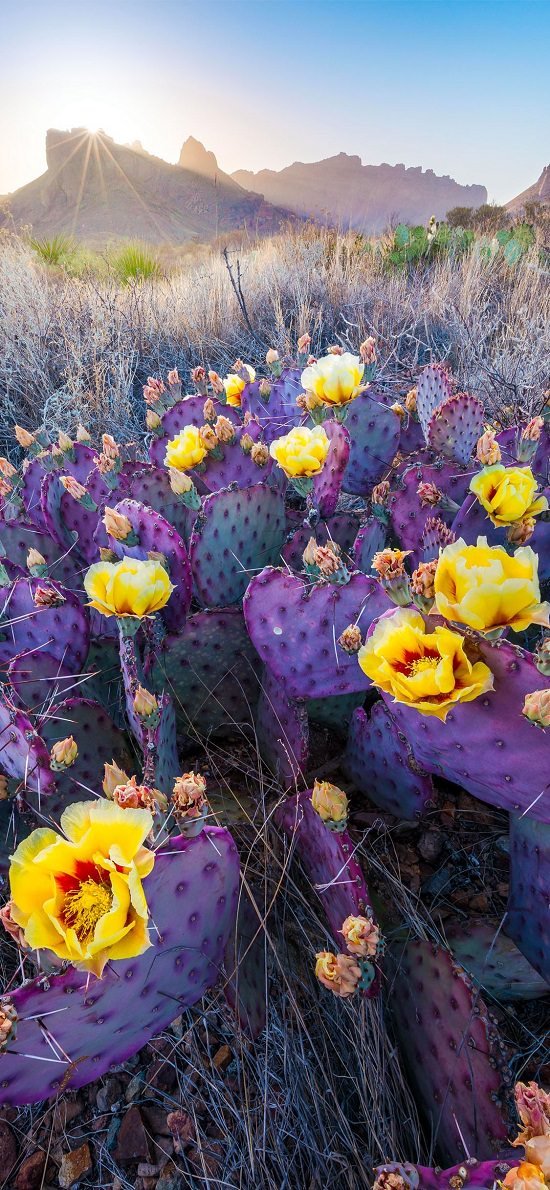
Botanical Name: Opuntia
- Type: Perennial cactus
- Origin: Americas, Africa, Australia
- Size: 1 – 10 feet tall (varies by species)
- Light Requirements: Full sun
- USDA Hardiness Zones: 4 – 11 (varies by species)
This spiny cactus not only bears cute little Yellow flowers but edible fruits too! It is one of the best types of cactus with yellow flowers and one of the rare Desert plants with yellow flowers.
Growing Tip: Thrives in well-draining soil with full sun. Water sparingly once established. Minimal pruning required; remove dead pads. Watch for aphids and scale insects.
Yellow Flower Climbers and Vines
54. Jessamine
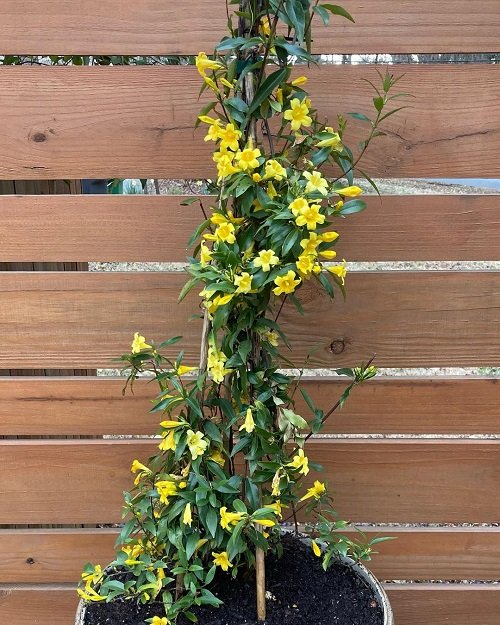
wildwood_garden_
Botanical Name: Gelsemium Sempervirens
- Type: Vine
- Origin: North America
- Size: 10 – 20 feet tall (when mature)
- Light Requirements: Full sun to partial shade
- USDA Hardiness Zones: 7 – 9
Also known as Yellow Jasmine, this vine doesn’t belong to the jasmine family. You can grow it for its golden Yellow flowers and sweet fragrance.
Growing Tip: Plant in well-drained soil with full sun to partial shade. Ensure proper support for climbing. Water moderately, allowing the soil to partially dry between waterings. Prune to control growth and remove dead vines. Watch for aphids and spider mites.
55. Honeysuckle
Botanical Name: Lonicera
- Type: Vine
- Origin: Various species, global distribution
- Size: Varies by species and cultivar
- Light Requirements: Full sun to partial shade
- USDA Hardiness Zones: Varies by species and cultivar
Honeysuckle vines are known for their fragrant, tubular-shaped Yellow flowers that attract hummingbirds and butterflies. These delightful vines are a charming addition to any garden or trellis.
Growing Tip: Requires well-draining soil and full sun to partial shade. Provide a sturdy trellis or support. Water moderately to keep the soil evenly moist. Prune after flowering to maintain shape. Watch for aphids and powdery mildew.
56. Golden Trumpet
Botanical Name: Allamanda cathartica
- Type: Vine
- Origin: South America
- Size: 6 – 20 feet tall (when mature)
- Light Requirements: Full sun
- USDA Hardiness Zones: 10 – 11
The Golden Trumpet vine is aptly named for its large, trumpet-shaped golden-Yellow flowers. Golden Trumpet vines thrive in warm climates and can be grown as both climbers and shrubs.
Growing Tip: Thrives in well-draining soil with full sun. Train as a climber or shrub. Water moderately, allowing the soil to partially dry between waterings. Prune to control size and shape. Watch for whiteflies and aphids.
57. Canary Creeper
Botanical Name: Tropaeolum peregrinum
- Type: Annual Climber
- Origin: South America
- Size: 6 – 10 feet tall (when mature)
- Light Requirements: Full sun
- USDA Hardiness Zones: 2 – 11 (annual)
The Canary Creeper is a delightful vine that produces clusters of bright yellow, canary-shaped flowers. This annual climber adds a playful and whimsical touch to your home.
Growing Tip: Plant in well-drained soil with full sun. Provide a trellis or support for climbing. Water moderately, keeping the soil consistently moist. Prune to encourage branching and more Yellow flowers. Watch for aphids and caterpillars.
Yellow Flower Trees
58. Golden Shower Tree
Botanical Name: Cassia fistula
- Type: Deciduous Tree
- Origin: South Asia
- Size: 30 – 40 feet tall
- Light Requirements: Full sun
- USDA Hardiness Zones: 10 – 11
The Golden Shower Tree boasts cascades of brilliant Yellow flowers that drape gracefully from its branches. This tropical beauty is celebrated for its stunning floral display, making it a true spectacle in gardens and landscapes.
Growing Tip: Plant in well-draining soil with full sun. Water deeply during the growing season and allow the soil to dry between waterings. Prune to shape and remove dead branches after flowering. Watch for aphids and scale insects.
59. Yellow Poinciana
Botanical Name: Peltophorum pterocarpum
- Type: Deciduous Tree
- Origin: Tropical Asia
- Size: 20 – 40 feet tall
- Light Requirements: Full sun
- USDA Hardiness Zones: 10 – 11
The Yellow Poinciana stands out with its golden, butterfly-like flowers that seem to float in the breeze. These bright blooms create a vibrant and sunny atmosphere in any garden or urban setting.
Growing Tip: Thrives in well-drained soil with full sun. Water these Yellow flowers regularly, especially during dry spells. Minimal pruning needed; remove dead wood. Watch for leaf-eating caterpillars and aphids.
60. Laburnum
Botanical Name: Laburnum anagyroides
- Type: Deciduous Tree
- Origin: Europe
- Size: 15 – 25 feet tall
- Light Requirements: Full sun
- USDA Hardiness Zones: 5 – 7
Laburnum, also known as the Golden Chain Tree, forms long, drooping clusters of Yellow flowers. Its elegant appearance and unique floral arrangement make it a captivating addition to both formal and informal gardens.
Growing Tip: Prefers well-draining soil in full sun. Water moderately to keep the soil consistently moist. Prune to maintain shape and remove dead branches. Watch for aphids and leaf spot.
61. Mimosa Tree
Botanical Name: Albizia julibrissin
- Type: Deciduous Tree
- Origin: Asia and Middle East
- Size: 20 – 35 feet tall
- Light Requirements: Full sun
- USDA Hardiness Zones: 6 – 9
The Mimosa Tree, with its fluffy, pom-pom-like Yellow flowers, adds a touch of exotic allure to landscapes. Its vibrant blossoms are not only visually appealing but also attract pollinators like butterflies and hummingbirds.
Growing Tip: Plant in well-draining soil with full sun. Water moderately, allowing the soil to partially dry between waterings. Prune to control size and shape. Watch for webworms and mimosa webworm moths.
62. Forsythia
Botanical Name: Forsythia x intermedia
- Type: Deciduous Shrub
- Origin: Asia
- Size: 3 – 9 feet tall
- Light Requirements: Full sun to partial shade
- USDA Hardiness Zones: 4 – 8
Forsythia ushers in spring with a profusion of bright Yellow flowers that cover its branches before the leaves appear. This deciduous shrub-like tree brings early-season cheer to gardens, heralding the arrival of warmer days.
Growing Tip: Requires well-drained soil and full sun. Water moderately, especially during dry periods. Prune after flowering to encourage new growth. Watch for aphids and leaf spot.
63. Yellowwood Tree
Botanical Name: Cladrastis kentukea
- Type: Deciduous Tree
- Origin: Eastern North America
- Size: 30 – 50 feet tall
- Light Requirements: Full sun to partial shade
- USDA Hardiness Zones: 4 – 8
The Yellowwood Tree graces gardens with its clusters of fragrant, creamy-Yellow flowers. Its graceful form and aromatic blossoms make it an elegant choice for enhancing the beauty of your outdoor space.
Growing Tip: Thrives in well-drained soil with full sun to partial shade. Keep soil consistently moist. Prune to shape and remove dead branches. Watch for aphids and scale insects.
Yellow Flower Ground Covers
64. Leontodon
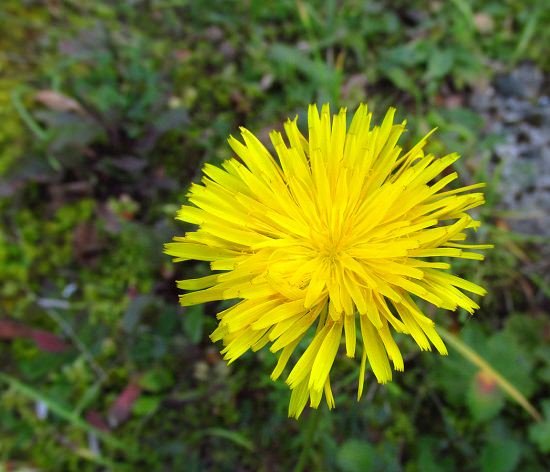
Botanical Name: Leontodon
- Type: Perennial
- Origin: Global distribution in meadows and stony slopes
- Size: Varies by species and location
- Light Requirements: Full sun to partial shade
- USDA Hardiness Zones: Varies by species and location
You probably would have seen this flower in meadows or stony slopes. The bright yellow color is charming and eye-catchy.
Growing Tip: Plant in well-drained soil with full sun to partial shade. Water moderately, allowing the soil to partially dry between waterings. This bright Yellow flowers ground cover adds charm to meadows and rocky slopes.
65. Bear’s Ear
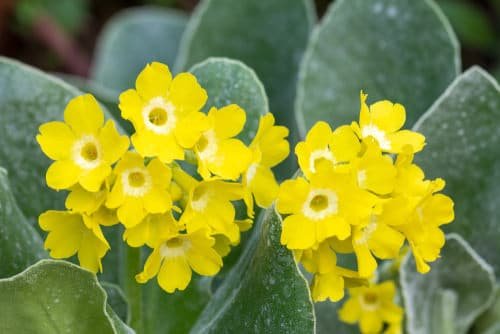
shutterstock/ViliamM
Botanical Name: Primula auricula
- Type: Perennial
- Origin: Europe
- Size: 4 – 8 inches tall
- Light Requirements: Partial shade
- USDA Hardiness Zones: 3 – 8
Bear’s Ear, with its large and fuzzy Yellow flowers, offers a unique and captivating presence in the wild, reminiscent of a warm embrace.
Growing Tip: Prefers well-draining soil in partial shade. Keep soil consistently moist. Enjoy the unique and fuzzy yellow blooms reminiscent of a warm embrace. A captivating wild ground cover.
66. Portulaca
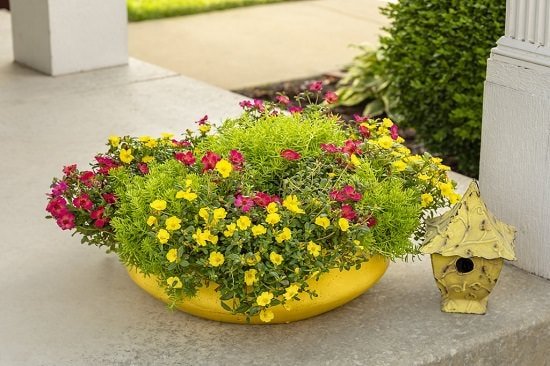
Image Credit: Proven Winners
Botanical Name: Portulaca grandiflora
- Type: Annual (can be perennial in warm climates)
- Origin: South America
- Size: 6 – 12 inches tall
- Light Requirements: Full sun
- USDA Hardiness Zones: 2 – 11 (annual in colder regions)
A great choice for warm climate gardeners, you can grow these Yellow flowers as annuals in cold climates. Some common names are rose moss, ten o’clock, Mexican rose, moss rose, Vietnam Rose, the sun rose, rock rose, and moss-rose purslane.
Growing Tip: Thrives in well-drained soil with full sun. Water moderately, especially in warm climates. Ideal for warm climate gardeners and can be grown as annuals in colder regions. Known by various common names like rose moss and Vietnam Rose.
67. Creeping Buttercup
Botanical Name: Ranunculus repens
- Type: Perennial
- Origin: Europe and Asia
- Size: 6 – 12 inches tall
- Light Requirements: Full sun to partial shade
- USDA Hardiness Zones: 4 – 9
Considered a weed in many regions, the creeping buttercup presents a good choice as the groundcover. It is one of the best creeping groundcover plants with Yellow flowers.
Growing Tip: Although considered a weed in some areas, it’s an excellent choice for ground cover. Plant in well-draining soil with full sun to partial shade. Water moderately, allowing the soil to partially dry between waterings.
68. Bulbous Buttercup
Botanical Name: Ranunculus Bulbosus
- Type: Perennial
- Origin: Europe and Asia
- Size: 6 – 12 inches tall
- Light Requirements: Full sun to partial shade
- USDA Hardiness Zones: 4 – 8
What sets it apart from the other meadow buttercup flowers is that the sepals are down-turned.
Growing Tip: Grow in well-drained soil with full sun to partial shade. Water moderately, ensuring the soil stays consistently damp. Notice the unique down-turned sepals that distinguish it from other meadow buttercups.
Yellow Flower Herbs
69. Yellow Allium
Botanical Name: Allium moly
- Type: Perennial
- Origin: Southern Europe, Western Asia
- Size: 12 – 24 inches tall
- Light Requirements: Full sun
- USDA Hardiness Zones: 3 – 9
Boasting a ball-like cluster of tiny, star-shaped Yellow flowers blooms on tall, sturdy stems, Yellow Alliums make a statement in any garden bed or landscape design.
Growing Tip: Plant in well-drained soil with full sun. Water moderately, allowing the soil to partially dry between waterings. The ball-like clusters of tiny, star-shaped yellow blooms on tall stems create a striking garden statement.
70. Calendula
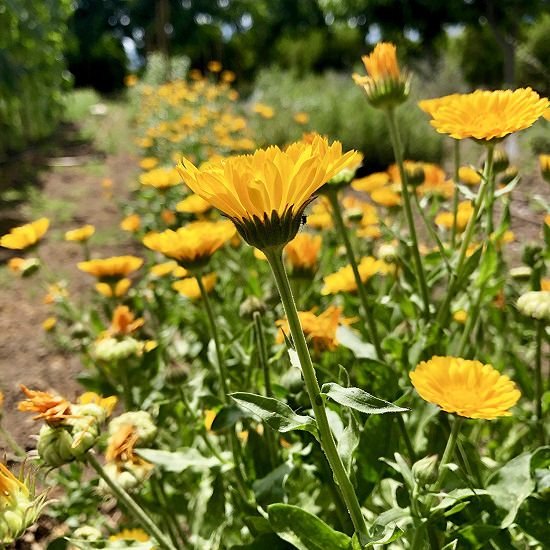
Botanical name: Calendula officinalis
- Type: Annual
- Origin: Southern Europe, Mediterranean
- Size: 12 – 24 inches tall
- Light Requirements: Full sun
- USDA Hardiness Zones: 2 – 11 (annual)
Calendulas are often known as pot marigolds, but they’re a different genus. These beautiful yellow specimens are edible as well.
Growing Tip: Thrives in well-drained soil with full sun. Water moderately, keeping the soil consistently moist. These beautiful Yellow flowers are not only ornamental but also edible, adding a pop of color to salads.
71. Chamomile
Botanical Name: Matricaria chamomilla
- Type: Annual
- Origin: Europe, Western Asia
- Size: 8 – 24 inches tall
- Light Requirements: Full sun
- USDA Hardiness Zones: 3 – 9
Chamomile is a soothing herb known for its daisy-like Yellow flowers. The gentle, apple-like fragrance of chamomile flowers makes them perfect for brewing calming herbal teas. Its delicate blooms are cherished for their ability to promote relaxation and aid in a good night’s sleep.
Growing Tip: Grow in well-drained soil with full sun. Water moderately, ensuring the soil stays evenly moist. The soothing daisy-like yellow blooms of chamomile are perfect for brewing calming herbal teas and aiding in relaxation and sleep.
72. Dandelion
Botanical Name: Taraxacum officinale
- Type: Perennial
- Origin: Europe, Asia, North America
- Size: 6 – 12 inches tall
- Light Requirements: Full sun
- USDA Hardiness Zones: 3 – 10
Dandelion is a versatile herb with bright Yellow flowers. Beyond its cheerful appearance, dandelion is valued for its culinary and medicinal uses. Its young leaves can be added to salads, and its roots are used in herbal remedies. Dandelion is a symbol of resilience, thriving in various environments.
Growing Tip: Prefers well-draining soil in full sun. Water moderately, allowing the soil to partially dry between waterings. Both the young leaves and roots of dandelion are used in culinary and medicinal applications, symbolizing resilience.
73. St. John’s Wort
Botanical Name: Hypericum perforatum
- Type: Perennial
- Origin: Europe, Asia
- Size: 12 – 36 inches tall
- Light Requirements: Full sun to partial shade
- USDA Hardiness Zones: 4 – 8
St. John’s Wort is a herbaceous plant with clusters of star-shaped Yellow flowers. This herb has a long history of traditional use in herbal medicine. It’s often sought for its potential mood-enhancing properties. St. John’s Wort’s sunny blossoms are a symbol of hope and well-being.
Growing Tip: Plant in well-drained soil with full sun to partial shade. Water moderately, ensuring the soil stays consistently damp. The star-shaped yellow flowers are sought after for their potential mood-enhancing properties, symbolizing hope and well-being.
74. Arnica
Botanical Name: Arnica montana
- Type: Perennial
- Origin: Europe, North America
- Size: 6 – 24 inches tall
- Light Requirements: Full sun to partial shade
- USDA Hardiness Zones: 3 – 9
Arnica is a mountain herb known for its bright yellow, daisy-like blooms. This herb is highly regarded for its anti-inflammatory properties and is commonly used in topical preparations. Arnica’s vibrant flowers are a reminder of nature’s healing power, making it a staple in natural remedies.
Growing Tip: Thrives in well-drained soil with full sun. Water moderately, allowing the soil to partially dry between waterings. The bright yellow, daisy-like blooms of arnica are valued for their anti-inflammatory properties and their role in natural remedies, representing nature’s healing power.
Conclusion
In the colorful world of flowers, yellow blooms stand out as symbols of hope, happiness, and positivity. Whether you’re a seasoned gardener or just starting, these diverse varieties of Yellow flowers can bring a touch of sunshine to your outdoor spaces. From the sunny faces of marigolds to the delicate elegance of yellow lilies, each flower tells a story of beauty and resilience.
So, as you embark on your gardening journey, remember that these Yellow flowers are more than just plants; they’re nature’s way of brightening our days and reminding us of the simple joys found in a garden’s vibrant tapestry of colors.
